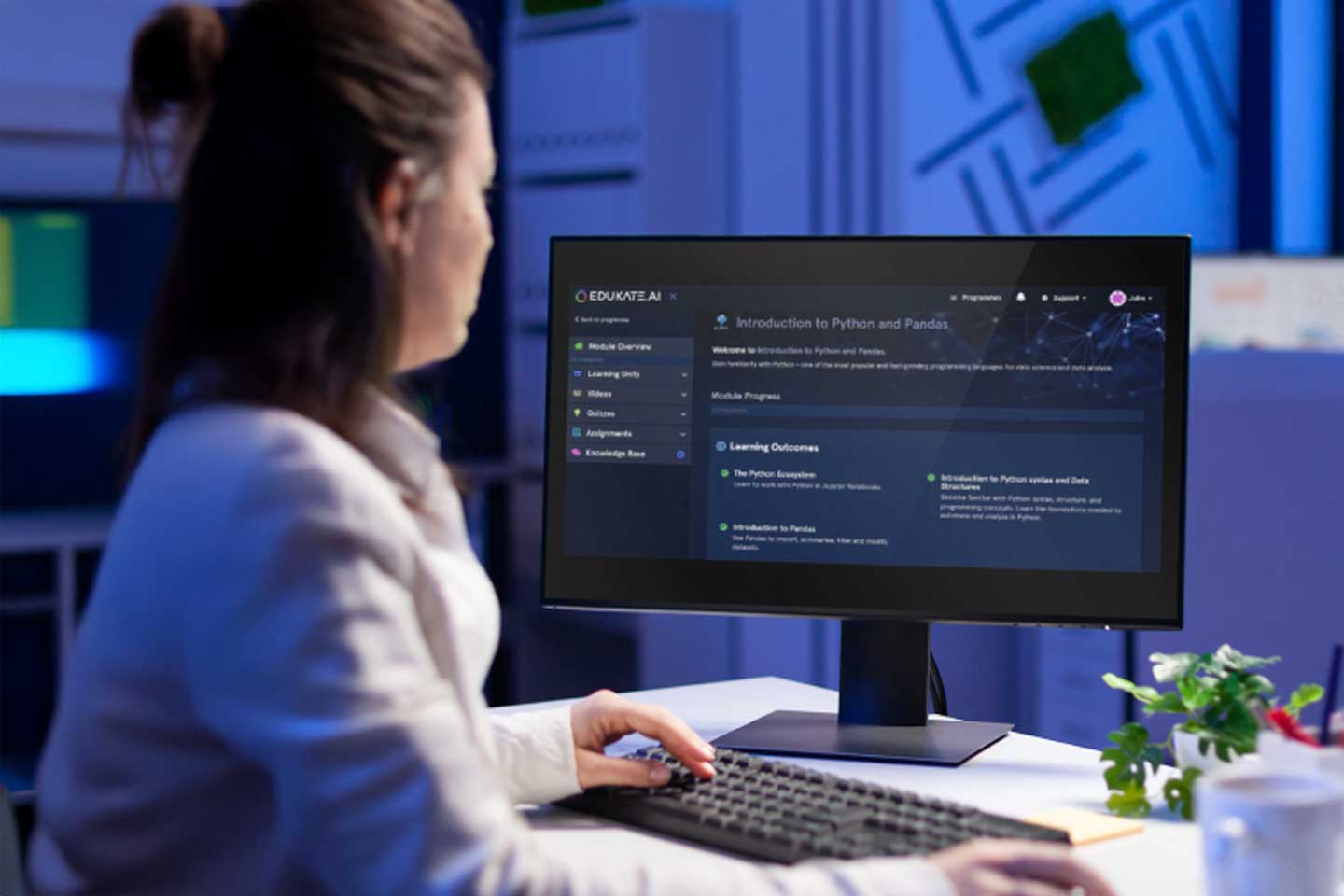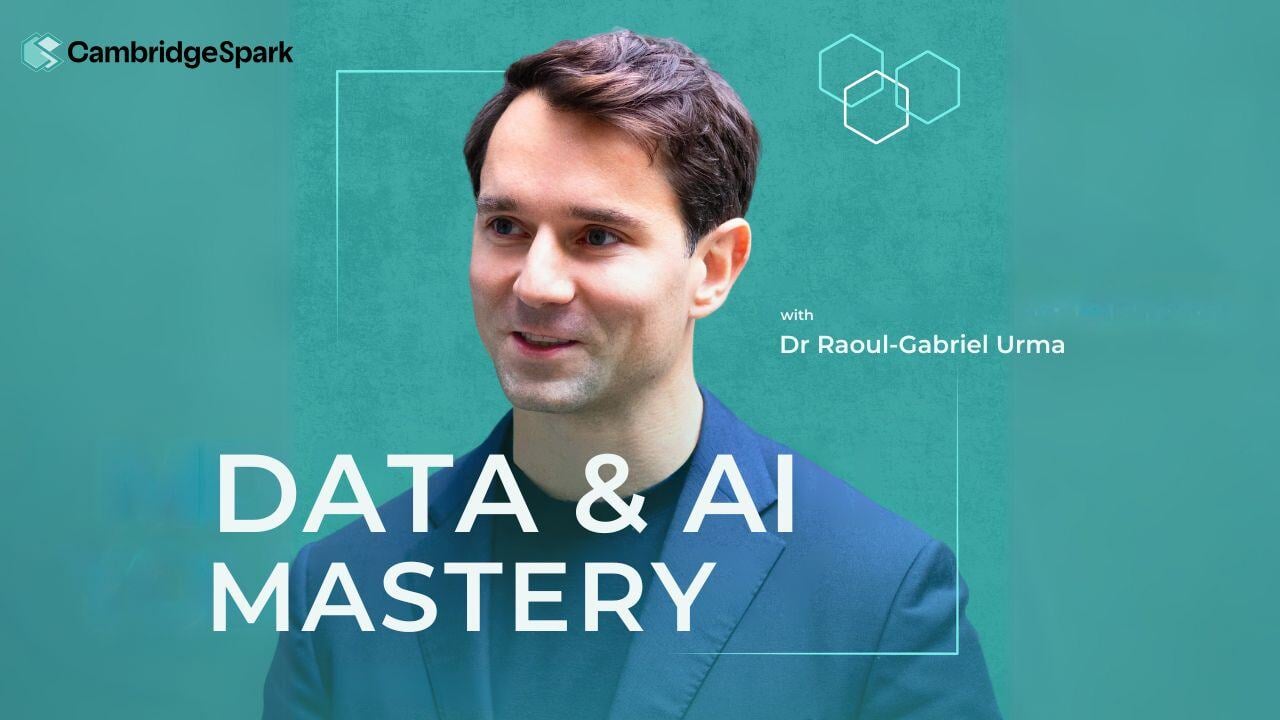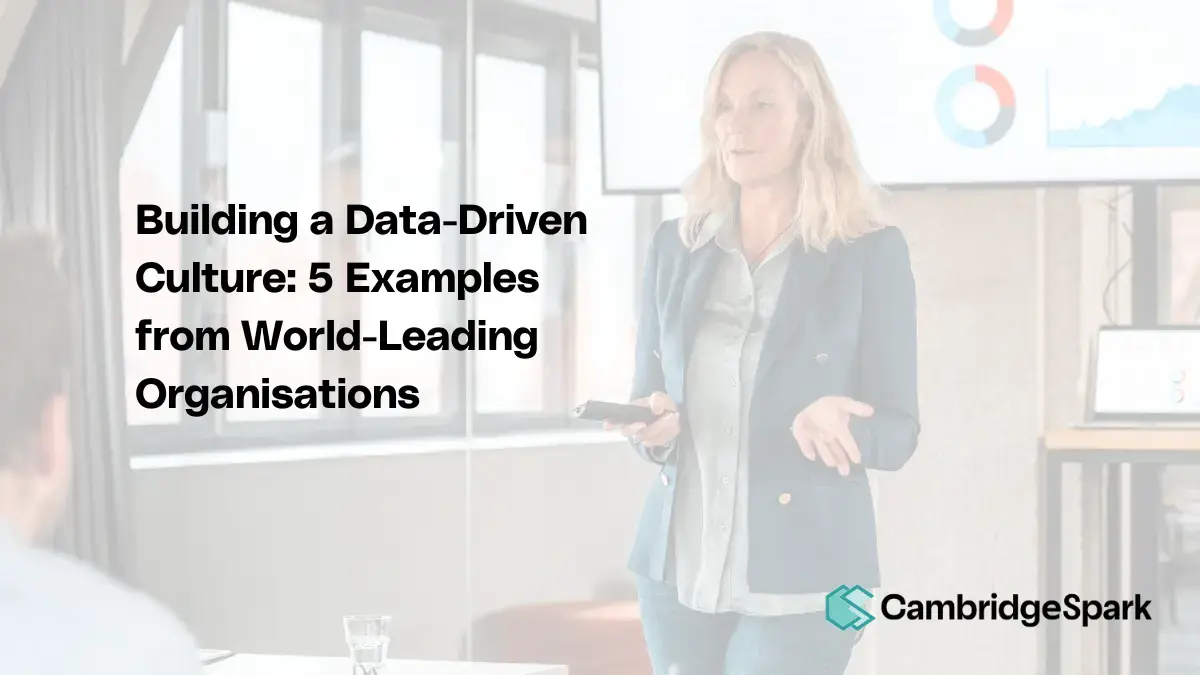David Waller, a partner and the head of data science and analytics for Oliver Wyman Labs, in a 2020 Harvard Business Review article said “Our work in a range of industries indicates that the biggest obstacles to creating data-based businesses aren’t technical; they’re cultural.”
So how can organisations overcome this cultural obstacle? First, let’s look into what defines a “data-driven culture”.
What is a data-driven culture within an organisation?
A data-driven culture is an environment where decision making, in every department, is anchored in data analysis and verifiable evidence rather than intuition or personal experience.
The most recognisable brands in the world are using data in innovative ways to drive a data-driven culture. This is due to the countless benefits a data-driven culture offers a business.
Some of these benefits include:
- More accurate decision making
- Product development and innovation opportunities
- Better insights into customer habits and behaviour
- Increased operational efficiency
True transformation in your organisation is only possible by starting with your data and the mindset of your workforce. Data allows an organisation to collect hidden insights that can facilitate immense growth in every department.
Here’s how 5 global industry leaders are achieving a data-driven culture:
1. Lloyds Banking Group
-1.webp?width=250&height=250&name=NHS-logo%20(2)-1.webp)
Lloyds Banking Group is a major British financial institution. It serves millions of customers in the UK and operates some of the country's best-known banking brands, including Lloyds Bank, Halifax, and Bank of Scotland.
For Lloyds Banking Group, a successful data-driven culture relies on a strong data team. By May 2023, Lloyds were investing £3 billion in their people, technology and data.
Their ambition? To “Help Britain Prosper”.
Ranil Boteju, Group Chief Data and Analytics Officer at Lloyds Banking Group said:
“But to achieve those aims – to truly harness the power data and analytics has to offer – it’s imperative that a data-driven culture be imbedded at the heart of an organisation. This is what we’re working towards at Lloyds Banking Group.”
There are already a wide range of established and emerging data roles at Lloyds Banking Group, driving a data-driven culture.
Despite this, Lloyds are still looking to build on their already powerful and diverse data team. Amongst industry experts and thought leaders - behavioural scientists, engineers, and over 30 PhDs, to name just a few. Each with a unique set of skills and a diverse range of experience and expertise, across a myriad of pathways.
In 2023, Cambridge Spark joined forces with Lloyds Banking Group. We co-delivered a bespoke 8-week data science bootcamp co-designed to upskill 57 recent graduates across London, Halifax, Edinburgh and Bristol. The learners completed weekly modules including machine learning and AI, software engineering and cloud computing.
The ambition remains on scaling this further, delivering high-quality data Graduate and Undergraduate programmes across LBG.
“Put simply, data will play a critical part. It’s a driving force behind our ambition to help Britain prosper. That’s why we will continue to invest in a data-driven culture – one that harnesses the power of data and analytics to create better products and experiences for our colleagues and customers.” - Ranil Boteju, Group Chief Data and Analytics Officer, Lloyds Banking Group
2. Uber
-1.webp?width=250&height=250&name=NHS-logo%20(3)-1.webp)
For those of us who live in bustling, fast paced cities, it’s hard to imagine life without Uber. Uber was launched in California in 2009 after co-founder, Garrett Camp, saw an opportunity in the market for more affordable and direct transportation to help people get from “A to B”.
By simply opening your app, selecting your destination and ordering your ride, you can be at your desired location within minutes, thanks to fast pick up times. And there’s no cash needed with Uber, as the company simply deducts payment from your bank account at your final destination.
Initially, Uber had to tackle some data issues by adopting a holistic approach to improve data management and quality across the board. Embracing this holistic approach also allowed Uber to get better insight into their customers and drivers.
In essence, they restructured their data logging systems, tools and processes, which included integrating existing systems and focusing on creating reliable sources of truth.
This restructuring then gave Uber the capability to collect invaluable data behind the scenes whilst supplying customers with the most efficient means of travel possible. And this data helps them to continuously improve various areas of the business.
Here are a few examples of the types of data Uber collect which enables them to improve the customer experience:
- Driver location data: Uber collects driver location data to make the customer experience as seamless as possible. By collecting this information, Uber can search for the nearest driver to the rider as soon as they hit “Choose Uber” on the app.
- Rider interaction: Another type of data that Uber collects is the way riders interact with the app. This allows for Uber to personalise a rider's experience with the app.
- Environmental data: Uber also collects information about the external environment during a ride, such as traffic conditions, weather, and road safety conditions, to improve routing algorithms and safety features.
Uber also uses data to improve their own daily processes and optimise their own operations, including:
- Demand prediction: Uber uses historical data on rides, including times, locations, and frequencies, to predict future demand in different areas. This helps in positioning drivers in high-demand areas ahead of time, which can maximise earnings for drivers.
- Pricing adjustments: Data on supply (number of available drivers) and demand (number of ride requests) allows Uber to implement dynamic pricing models such as surge pricing. This helps balance rider demand with driver availability, ensuring that rides are available when needed, even during peak times.
- Product development: Usage and preference information is crucial for Uber in developing new features or improving existing ones. This data informs decisions on what new services to introduce, like Uber Eats or Uber for Business, and how to enhance the app's user interface.
3. Bupa

BUPA, short for British United Provident Association, is an international healthcare group founded in 1947 in the UK. It operates globally, providing health insurance, running care homes, hospitals, dental centres, and outpatient clinics.
Their goal is “to be the world’s most customer-centric healthcare company". And one of their key “strategic and enabling pillars” to achieving this goal is using data-driven decision making.

Mark Glenn, Group Chief Information Officer at Bupa said:
“It's safe to say, like many companies founded before the advent of the internet and cloud technologies, we are challenged by legacy systems. Embracing a digital, agile mindset across our business is helping us to start leaping these hurdles, which can only be beneficial for our customers.
“These days it's hard to imagine any business which doesn't have technology at its very core. We all expect high quality customer service at our fingertips in everything from healthcare, to groceries and entertainment – and investment in technology and, crucially, those developing it makes this all possible.”
In 2021, Bupa launched their “Digital Skills Academy”. The aim of the Digital Skills Academy is to develop Bupa’s digital capabilities across the organisation and to help them to achieve their technological goals.
“We see it as a digital bootcamp – a way for our people to build or strengthen their skills and continuously exercise their digital muscles by learning about new tools, trends and ways of working.” - Mark Glenn, Group Chief Information Officer at Bupa
As part of their Digital Skills Academy, Bupa also launched their Digital SummIT, described by Bupa as “a digital learning festival”. This is a series of events that range from webinars to workshops covering a wide range of digital topics.
Internal and external experts come together during the event to deliver interactive sessions on topics like AI, the Cloud, agile culture, data, security and sustainability.
“We know there is a hunger among many of our people to learn more, which is why we are rolling out our Digital Skills Academy. It will provide our tech teams with the expertise needed to deliver our strategy while also giving employees across Bupa the opportunity to advance their learning.” - Mark Glenn, Group Chief Information Officer at Bupa
4. Coca-Cola
.webp?width=250&height=250&name=NHS-logo%20(4).webp)
More than 2.2 billion servings of Coca-Cola drinks are enjoyed in more than 200 countries and territories each day. That’s a lot of customers and an explosion of data to work with.

How are they applying data insights? They’re using AI to monitor product mentions online. With millions of followers on Facebook, Instagram, Twitter and Youtube, the Coca-Cola marketing team are working with a lot of online engagement.
In fact, a 2015 study found that a Coca-Cola product was mentioned once every 2 seconds online. So Coca-Cola got to work analysing these mentions with the help of AI.
AI helped Coca-Cola to learn specific details about their consumers, like where they live, who they are and why they are discussing the products online. And as any marketer knows, getting to know your customers is the first step to any successful campaign.
AI also allows Coca-Cola to analyse images of the products that are being uploaded to the internet. This means that Coca-Cola can then “serve” targeted ads to these consumers based on the image they’ve uploaded. Company representatives reported that these types of ads are 4x more likely to be clicked on than other types of targeted marketing.
Clever huh?
5. Netflix
.webp?width=250&height=250&name=NHS-logo%20(5).webp)
If you’re a TV series “binger” or a film fanatic, chances are you have a Netflix account. And you might have noticed that Netflix’s user experience is just about as seamless and customised as it gets.
Netflix was created with the intent of putting consumer choice and control at the heart of the entertainment experience. But unsurprisingly, the right decisions were needed throughout the product development journey to achieve the level of personalisation Netflix customers enjoy today.
So how do Netflix ensure they are making the right decisions to develop their customer offerings? First and foremost, they use data collected from A/B testing.
Through A/B testing, Netflix compares two versions of a feature to determine which one performs better. In this method, they divide users into two groups, with each group experiencing a different version of a feature.
These variations might include changes in the user interface, recommendation algorithms, or different marketing tactics.
Netflix then measures the success of each version using specific metrics like engagement or retention rates. This data-driven approach helps Netflix make informed decisions about which improvements effectively enhance the user experience.
For instance, because of A/B testing Netflix has now developed its online platform from using static imagery...
.webp?width=1050&height=1182&name=Old%20Netflix%20(1).webp)
…to using a more engaging, motion packed homepage below, designed to entice people into watching.
“You have to rely on what you can discover about the customer, how they behave, what they purchase, what they watch, what they did and how they move through a website. That tracking and understanding [for Netflix] came from building a system to allow us to have the data to make these good decisions. It permeated literally every single piece of that organisation. I truly believe it was the fundamental ingredient, not just to our success, but to our huge competitive advantage.” - Mark Randolph, Co-founder at Netflix
Netflix currently provides entertainment to nearly 270 million subscribers. With 9.3 million subscribers joining during the first quarter of 2024, growth was three times more than analysts had projected 4 times more than this time last year. So, you could say they must be doing something right.

Conclusion
Seeing the innovative ways that some of the world's biggest brands are using data to get ahead of the game is nothing short of inspiring. These brands exemplify the profound impact that a deep commitment to data can have on operational efficiency, innovation, and customer satisfaction.
Is your organisation looking to follow in the footsteps of these brands? Learn more about our data apprenticeship programmes or professional programmes or get in touch with us via the form below. Start your journey of building a more data-driven culture within your organisation today.





.png?width=333&height=491&name=How%205%20big%20brands%20are%20building%20a%20data-driven%20culture%20infographic%20(2).png)